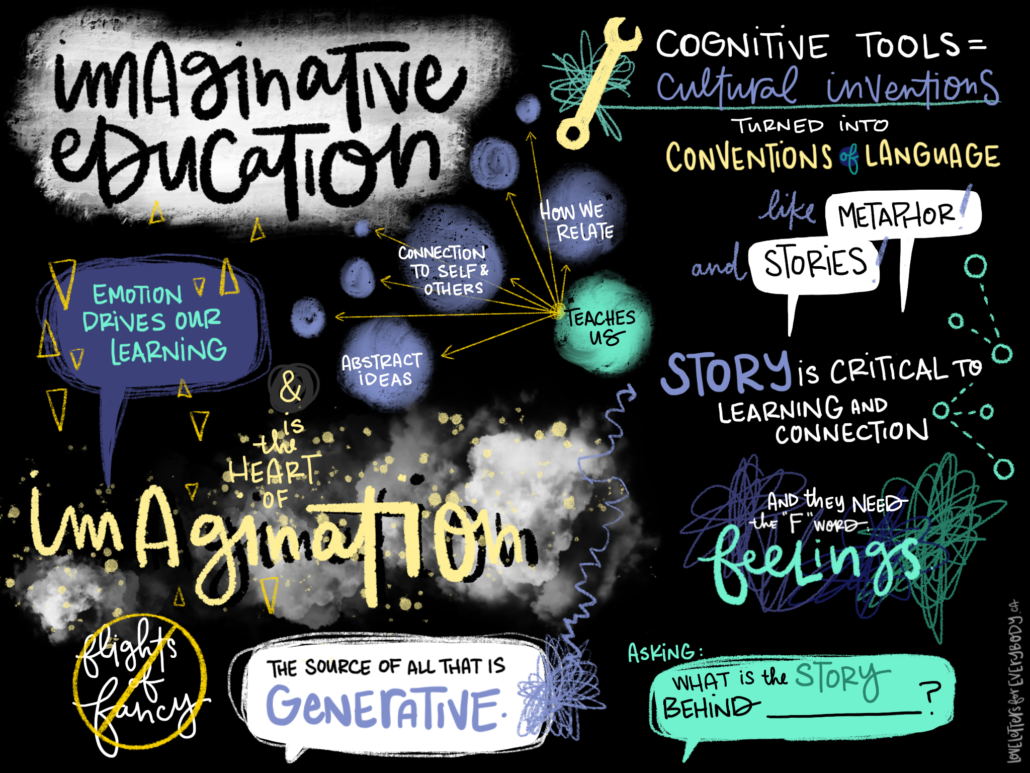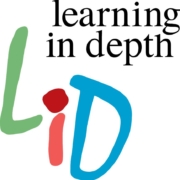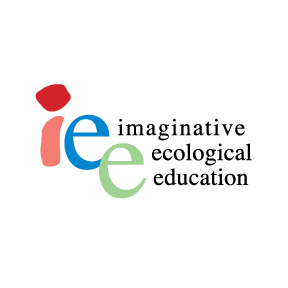Imaginative Education
shapes topics into narrative or story-form in order to evoke emotion.
employs powerful imagery, humour, and bodily engagement.
reveals the extremes, limits, and mind-boggling aspects of reality.
evokes transcendent qualities and awe-inspiring aspects of topics.
embeds ideas into the powerful world of theory.
conveys the emotional significance of topics.
engages the emotions of teachers and students.
**Graphic by artist Corinna Keeling
These are a few dimensions of a cross-curricular approach to teaching called Imaginative Education developed by world-renowned scholar Dr. Kieran Egan. Imaginative Education is a unique way of teaching that taps into distinctive features of students’ emotional and imaginative lives. This approach to teaching is for students of all ages in all contexts–PreK through graduate school, formal schooling, home education, and all kinds of alternative educational settings. IE is based on an understanding of how the human imagination works and the learning tools—or “cognitive tools”—that engage and develop imagination. IE resources show educators how to apply these tools in all subject areas to maximize student engagement and learning.
Unlike many approaches to education, IE aligns how people acquire lasting understandings of the world. Imaginative educator seeks to value and build upon the way the child understands her or his experiences, rather than always focusing on the “adult” way of understanding as the measure of learning. To do this, educators themselves must be imaginative and sensitive to dimensions of learning that they may have never thought of as relevant to education.
In addition to writing an enormous amount about how imagination is involved in all learning, Dr. Egan’s creation of the Imaginative Education Research Group (IERG) in 2001 led to the development of an extensive amount of practical strategies, support and resources for teachers. Many of the resources created by the IERG are available through CIRCE.
Learn More
Get this Brief Guide to Imaginative Education. You might also read about Ideas Foundational to IE to learn more about the IE approach. Here is a range of different lessons and units that were developed using cognitive tools. IERG members have also developed different guides for teacher planning which you can access here.
Read Three Toolkits To Help Maximize Student Engagement for an introduction to “cognitive toolkits”. Or learn about each cognitive tool and get resources for immediate use through the Tools of Imagination Series on the imaginED blog. The notion of “kinds of understanding” is new for many educators. Put Engagement First: Think Differently About Your Students is a post that introduces that concept.




